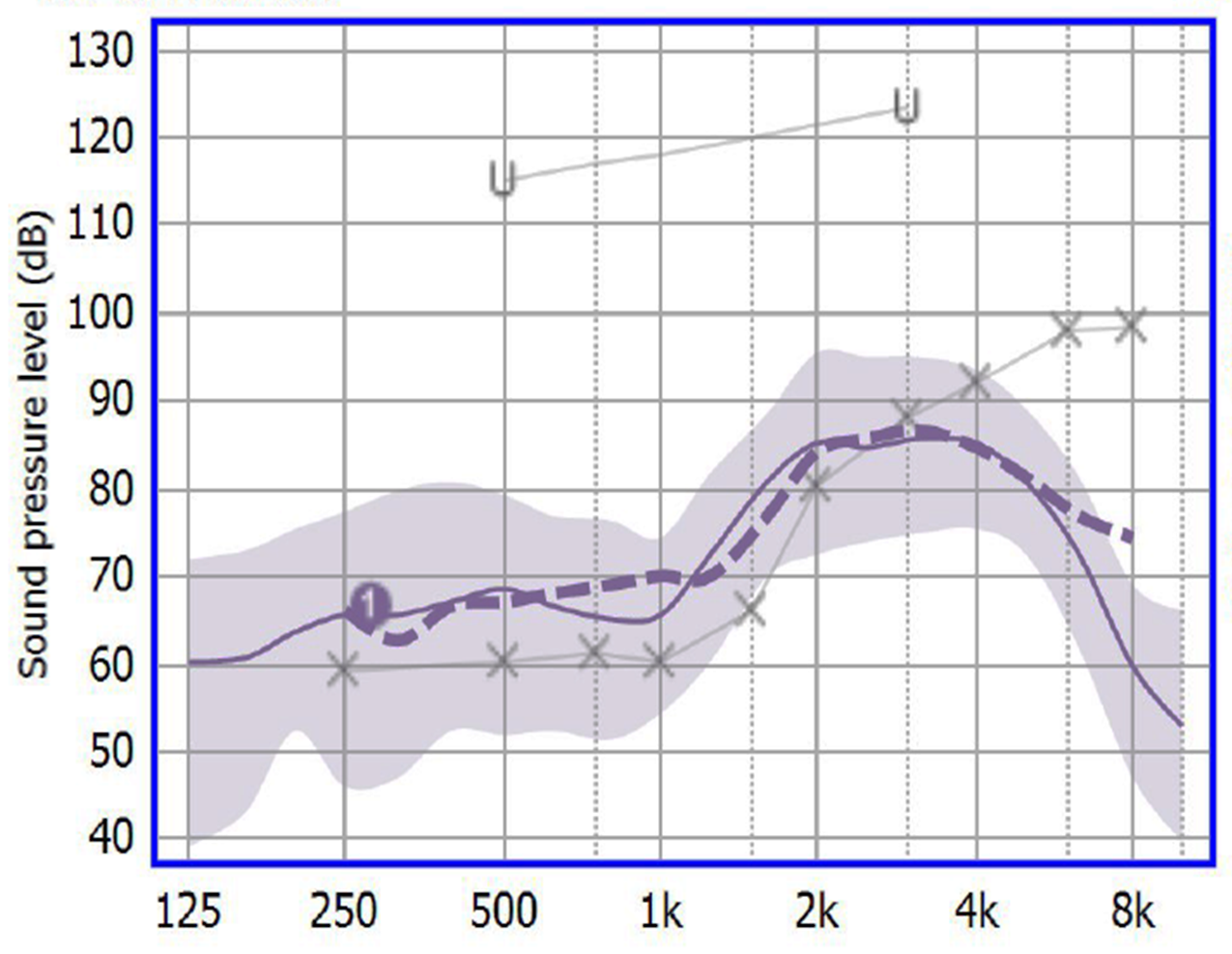Question
Why is it that sometimes my speech mapping targets in the high frequencies are below the patient’s thresholds? This has to be some calculation mistake, right? Don’t we want audibility?
Answer
A common and reasonable question. You’re right, at first glance it does look like a mistake, as after all, isn’t audibility what we are after here? But I’m quite certain that after 30 to 40 years of research with thousands of people, the developers of both the NAL-NL2 and the DSL5.0 know what they are doing.
You indeed will see this with adult patients for both the NAL and DSL, particularly for steeply downward-sloping audiometric configurations, when the loss in the highs is severe. Figure 1 in an example of this, showing the long term average speech spectrum (LTASS) speech mapping targets for an average-level input; NAL-NL2 on the left, the DSL5.0 on the right.
Figure 1. LTASS speech mapping targets for an average-level input for NAL-NL2 (left) and DSL5.0 (right).
Note in Figure 1, that for both prescriptive methods, the target for the LTASS falls below the patient’s thresholds for 3000 Hz and above. It might be tempting in these cases to overshoot the target to obtain more audibility, but I think you’d be making a mistake.
Here are four reasons why. First, you can’t just look at the LTASS. It’s important to consider the full amplified spectrum of average speech (“the banana”). It’s possible that the peaks will be as much as 12-15 dB higher than the LTASS, and indeed speech is audible. Figure 2 shows the aided speech mapping results, a good fitting I might say, for a patient where the NAL-NL2 targets are below the patient’s thresholds for 3000 Hz and above (see the dashed line). But observe that when we display the percentages of the amplified signal (30th to 99th percent; the shaded area), we see that much of the speech signal is audible for these higher frequencies of 3000 and 4000 Hz.

Figure 2. Aided speech mapping results.
A second point to consider is that prescriptive methods were designed to deliver the “correct” amount of loudness. Boosting the loudness in these high frequencies will likely necessitate reducing gain elsewhere, where audibility has a greater impact on intelligibility—it’s a compromise—you have a loudness budget, and you have to use your dB allotment carefully. Consider that if the amplified signal is too loud, the patient cannot simply turn down gain at 4000 Hz, but will turn down gain for all frequencies. For most hearing losses, we would not want to trade audibility at 2000 Hz for audibility at 4000 Hz.
The third point relates to something called “effective audibility.” The effectiveness of audibility decreases with hearing loss, and the decrement is the greatest at the high frequencies. More gain for these high frequencies might not mean increased speech understanding. Both the NAL-NL2 and the DSL5.0 have taken this into account when determining the best high frequency fitting targets.
Finally, the amplified signal must have acceptable sound quality, which also has been factored into prescriptive targets. Increasing gain above the fitting targets for these high frequencies might have a negative impact, and prompt the user to turn down overall gain, taking us back to my second point.
So while it might not look quite right, and it might be tempting to boost gain in these cases, I’m going to hang my hat on the research that developed the prescriptive targets, and stick with them.

